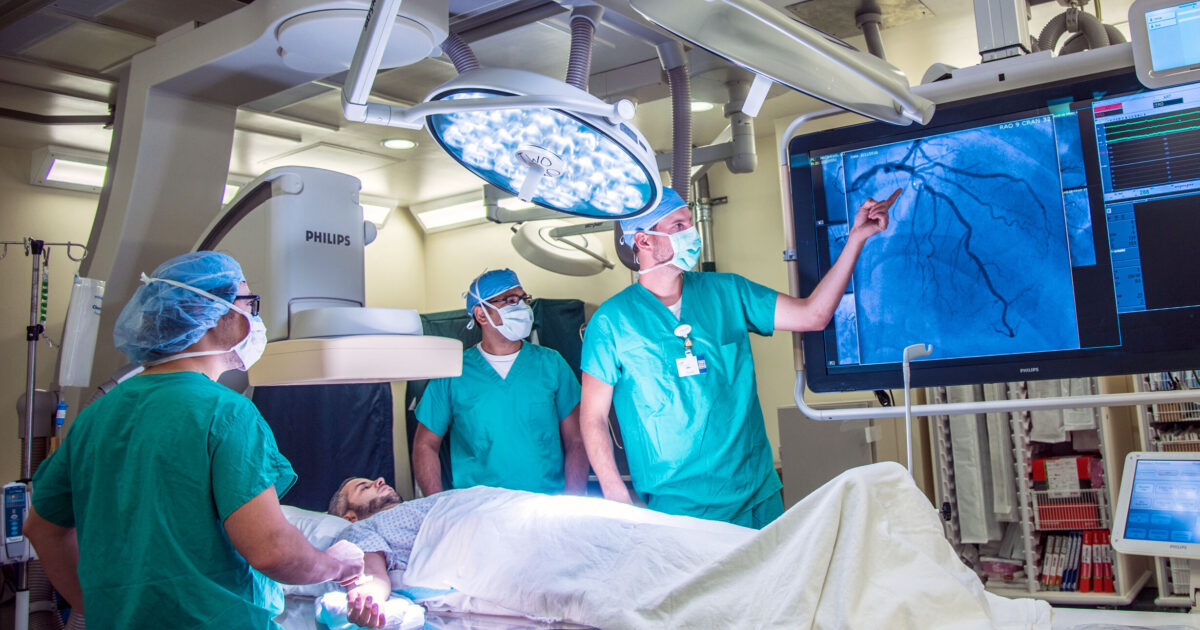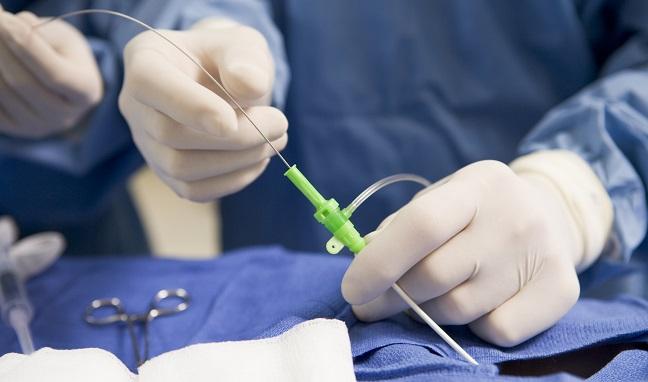Healthy diets through the lens of Cardiology care
Healthy diets through the lens of Cardiology care
Blog Article
Recognizing the Relevance of Cardiology in Modern Medical Care Services
Cardiology plays an important duty in modern-day medical care, specifically as cardiovascular disease remains to be the leading reason for mortality worldwide. Advances in diagnostics and treatment have transformed individual treatment, making it possible for earlier interventions and enhanced end results. In addition, the change in the direction of preventative cardiology encourages people to handle their health and wellness proactively. As innovation remains to evolve, the integration of innovative remedies might additionally redefine cardiology's influence on public health and wellness, triggering a closer examination of arising patterns and their ramifications.
The Prevalence of Heart Problem and Its Impact on Public Wellness
Although heart problem stays the leading cause of fatality internationally, its impact expands much beyond specific clients to affect public wellness systems and economic climates. The high prevalence of heart condition places a significant stress on healthcare sources, necessitating boosted funding for treatment, avoidance, and recovery programs. Public wellness efforts have to resolve threat variables such as excessive weight, smoking, and inactive lifestyles, which contribute significantly to the climbing incidence of heart conditions.Moreover, the economic worry connected with heart problem is tremendous, encompassing not just straight medical expenses yet additionally indirect expenses associated to shed productivity and premature mortality. Areas face challenges in handling these expenses, usually resulting in differences in medical care access and outcomes. As the population ages and lifestyle-related dangers proceed to rise, the necessity for effective cardiology interventions becomes critical. As a result, resolving heart problem is not just an issue of individual health but also a vital public health and wellness concern.
Breakthroughs in Heart Diagnostics and Imaging Techniques
Recent advancements in cardiac diagnostics and imaging techniques have actually reinvented the field of cardiology, enhancing the capability to find and keep an eye on cardiovascular disease. Methods such as cardiac MRI, CT angiography, and echocardiography have come to be significantly advanced, offering detailed pictures of heart frameworks and functions. These modalities permit the very early identification of problems like coronary artery illness, cardiac arrest, and valvular disorders.Moreover, developments in non-invasive diagnostics, such as wearable technology and remote surveillance gadgets, have encouraged clients and healthcare providers. These devices help with real-time monitoring of heart rhythms and various other important indicators, causing timely treatments. Additionally, fabricated knowledge is being incorporated into imaging evaluation, enhancing precision and effectiveness in diagnosis.
Innovations in Therapy Options for Heart Issues
Recent improvements in cardiology have actually brought about considerable innovations in treatment alternatives for heart conditions. These consist of advanced surgical strategies that enhance step-by-step outcomes and emerging drugs that offer new methods for therapy. As the field evolves, these developments play an essential role in enhancing person care and results.
Advanced Surgical Techniques
Innovations in surgical strategies have actually transformed the landscape of cardiology, providing brand-new wish for patients with heart conditions. Minimally intrusive procedures, such as catheter-based treatments, have considerably minimized recovery times and health center stays. Techniques like robotic-assisted surgical treatment boost accuracy, allowing surgeons to navigate complex anatomical structures with greater accuracy. Innovations in imaging modern technology promote real-time visualization throughout treatments, improving outcomes. Transcatheter aortic valve replacement (TAVR) exemplifies a breakthrough in treating aortic constriction, making it possible for shutoff substitute without open-heart surgical procedure. In addition, hybrid strategies that incorporate medical and catheter-based techniques offer customized remedies for different heart problems. These sophisticated surgical strategies not just enhance patient safety yet additionally broaden treatment options, emphasizing the important function of development in modern cardiology techniques.
Arising Medicines and Therapies
As the landscape of cardiology continues to evolve, arising treatments and medicines play a pivotal duty in boosting therapy alternatives for heart disease. Technologies such as novel anticoagulants and advanced lipid-lowering representatives have transformed the administration of cardiovascular conditions, considerably decreasing person morbidity and death. Additionally, the advancement of genetics therapies and regenerative medication uses promising opportunities for treating conditions formerly considered incurable. Medical tests are constantly disclosing the effectiveness of these treatments, pushing the borders of conventional therapies. The integration of digital wellness technologies helps with tailored medicine, allowing for tailored therapy plans based on genetic and way of life variables. Collectively, these developments highlight the vibrant nature of cardiology, boosting person results and redefining requirements of care in modern-day healthcare.
The Role of Preventive Cardiology in Individual Treatment
Preventive cardiology plays a crucial function in individual treatment by concentrating on the recognition of threat factors that add to cardiovascular disease. With way of life adjustment methods and very early discovery methods, health care service providers can successfully minimize the occurrence of cardiovascular events - Cardiology. This aggressive technique not only improves patient outcomes yet additionally advertises long-lasting health and wellness
Danger Aspect Recognition
While cardiovascular illness remain a leading cause of morbidity and death worldwide, reliable danger element identification serves as a cornerstone of preventative cardiology. Recognizing danger elements such as hypertension, household, hyperlipidemia, and diabetic issues background is necessary for early treatment. Health care professionals make use of different evaluating techniques to review these elements, enabling customized preventive actions. Furthermore, understanding an individual's way of life choices, such as smoking cigarettes and physical inactivity, better informs threat assessments. This thorough assessment allows clinicians to create tailored treatment strategies click over here now focused on mitigating risks. By focusing on risk aspect recognition, health care systems can boost client results and minimize the overall concern of heart diseases, eventually adding to improved public health and wellness approaches and resource appropriation.
Lifestyle Adjustment Approaches
A wide range of research studies highlights the essential role of way of life modification methods in lowering heart disease danger. These methods incorporate nutritional changes, boosted physical task, smoking cessation, and weight management. By embracing a heart-healthy diet plan abundant in fruits, veggies, entire grains, and lean healthy proteins, people can decrease cholesterol degrees and blood stress. Normal exercise strengthens the heart and improves overall cardio wellness. In addition, giving up smoking cigarettes greatly reduces the risk of heart disease and enhances healing prices for those with current conditions. Weight administration even more adds to cardiovascular health by mitigating other risk factors such as diabetes and high blood pressure. Applying these way of living alters not only promotes private well-being but additionally works as a foundation of precautionary cardiology in patient treatment.
Very Early Detection Techniques
Lifestyle alterations substantially add to minimizing heart disease threats, yet they are most efficient when matched with early discovery methods. Preventive cardiology stresses the importance of identifying potential heart concerns prior to they escalate right into major problems. Methods such as high blood pressure surveillance, cholesterol testing, and progressed imaging innovations like echocardiograms play crucial duties in assessing cardio health and wellness. Biomarkers and genetic testing also boost the precision of very early discovery, enabling customized precautionary approaches. Routine cardiac threat evaluations equip doctor to intervene proactively, possibly preventing cardiac arrest and strokes (Cardiology). By integrating these very early discovery methods right into regular care, individuals can gain from timely way of life treatments and targeted treatments, eventually boosting outcomes and improving lifestyle
Integrating Innovation Into Cardiology Practices
As innovations in technology continue to reshape different areas, the integration of innovative tools and systems right into cardiology techniques has actually become vital for improving client treatment and end results. Telemedicine systems allow cardiologists to monitor clients from another location, boosting accessibility to care while decreasing the worry on healthcare facilities. Wearable devices, such as smartwatches, enable continuous heart rate monitoring, notifying both medical professionals and people to possible concerns in real-time. Additionally, synthetic knowledge (AI) is being used to examine huge quantities of heart data, assisting in early diagnosis and customized treatment strategies. Advanced imaging read here strategies, consisting of 3D echocardiography, improve visualization of heart structures, resulting in much more accurate interventions. Digital wellness records (EHRs) improve client information monitoring, guaranteeing that cardiologists have immediate access to crucial information. Together, these technological innovations are changing cardiology, promoting aggressive management and enhanced health and wellness outcomes for people with cardio conditions.
The Relevance of Client Education And Learning and Interaction
Patient education and involvement play a critical duty in the administration of cardio health and wellness. By outfitting clients with expertise about their conditions, therapy options, and way of life adjustments, doctor encourage individuals to take an energetic duty in their care. This positive technique can lead to enhanced adherence to suggested medications, dietary modifications, and workout regimens, ultimately minimizing the danger of complications.Engagement additionally fosters a strong patient-provider connection, urging open interaction and trust. When clients really feel educated and included, they are extra likely to voice issues and ask inquiries, which can lead to better medical results. Furthermore, instructional sources, such as workshops or electronic systems, can enhance understanding and promote self-management strategies. In general, prioritizing client education and engagement is vital for improving cardiovascular health and wellness, enhancing lifestyle, and minimizing health care expenses connected with heart diseases.
Future Trends in Cardiology and Their Potential Influence

Often Asked Questions
What Lifestyle Adjustments Can Minimize Cardiovascular Disease Danger?
The current inquiry addresses way of living adjustments that can greatly reduce heart problem danger. Cardiology. Embracing a balanced diet regimen, taking part in regular exercise, keeping a healthy and balanced weight, handling stress, and staying clear of cigarette can notably boost cardiovascular wellness
Exactly How Can I Recognize Very Early Indications of Heart Problems?
Acknowledging early indicators of heart problems entails monitoring signs and symptoms such as breast discomfort, shortness of breath, fatigue, and irregular heartbeat. Timely recognition of these indications can trigger necessary clinical examination and intervention for far better outcomes.
What Are the Distinctions Between Cardiologists and Cardiac Surgeons?
The distinctions between cardiologists and heart surgeons hinge on their duties; cardiologists primarily handle and detect heart disease with non-invasive approaches, while cardiac doctors perform surgical treatments to remedy structural heart problems. Each plays an essential, distinct function.

Exactly how Usually Should I Get My Heart Health Checked?
The frequency of heart health checks differs based on individual threat variables. Normally, adults should undertake examinations each to two years, while those with existing problems might require even more regular assessments as suggested by health care professionals.
What Duty Does Genetics Play in Heart Disease Threat?
Genetics greatly affects cardiovascular disease threat, with familial patterns showing inherited problems. Certain genes can incline individuals to hypertension, cholesterol concerns, and other cardio problems, highlighting the relevance of genetic testing in discover this assessing heart wellness. Heart illness continues to be the leading cause of death globally, its effect extends far past individual clients to affect public health and wellness systems and economies. Public health and wellness campaigns should resolve danger factors such as weight problems, smoking, and inactive way of livings, which contribute significantly to the climbing incidence of heart conditions.Moreover, the economic problem linked with heart disease is tremendous, including not just straight clinical costs however additionally indirect expenditures related to lost efficiency and early death. Preventive cardiology plays a vital function in person treatment by concentrating on the identification of danger aspects that add to heart condition. Artificial intelligence (AI) and maker learning are improving diagnostics and individual surveillance, making it possible for very early discovery of heart diseases. The differences between cardiologists and cardiac cosmetic surgeons lie in their functions; cardiologists mainly take care of and detect heart problems via non-invasive approaches, while heart doctors execute medical treatments to deal with architectural heart issues.
Report this page